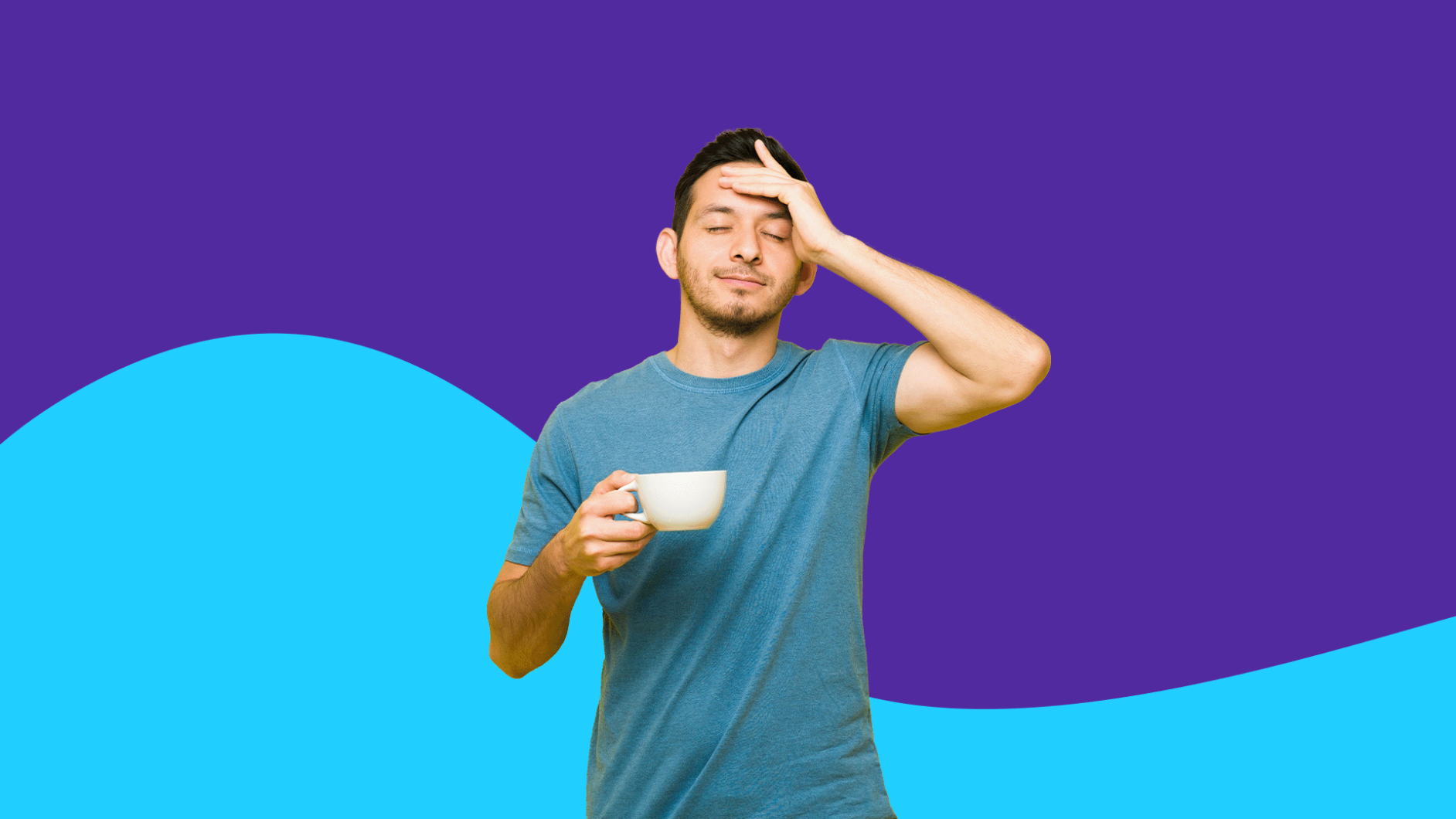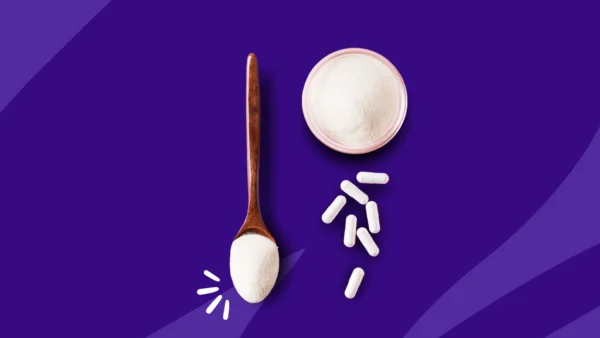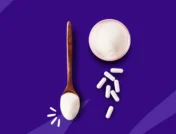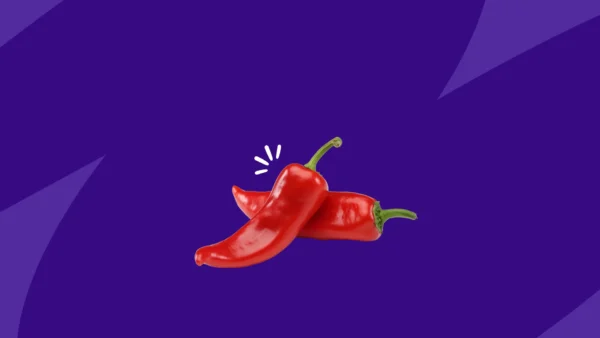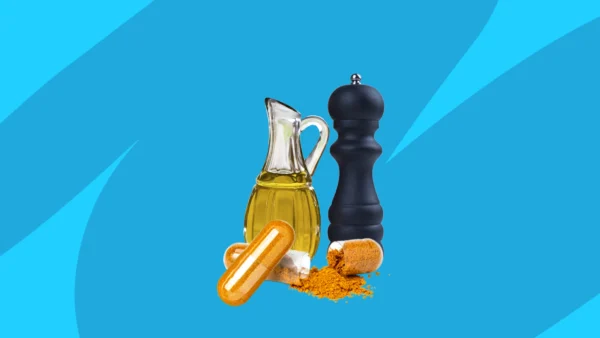If you are one of the 80% to 90% of adults who start your day with a cup of coffee, it’s likely you will encounter caffeine withdrawal at one time or another. Caffeine withdrawal usually occurs when you quit caffeine “cold turkey” and can cause unpleasant symptoms—one of the most common being a caffeine withdrawal headache. Some people with caffeine dependence get headaches if they miss their daily Starbucks latte by even an hour.
If you’ve recently quit caffeine, you are probably wondering how to get rid of your caffeine headache. This is totally understandable because caffeine withdrawal headaches can be painful, uncomfortable, and even debilitating. Let’s take a look at what causes caffeine headaches, what symptoms to watch for, how to treat them—and most importantly, how to prevent them from happening in the first place.
What is a caffeine headache?
The word headache is used to describe any type of head pain. There are several different types of headaches, including tension headaches, migraines, and cluster headaches. Headaches range from mild to severe and have many different causes: changes in sleep patterns, a reaction to food you’ve eaten, increased stress, dehydration, and hormonal changes.
One potential cause of headaches is caffeine withdrawal. When you regularly consume caffeine your body becomes dependent on it, and when your body no longer gets its caffeine fix, withdrawal symptoms can result. Caffeine withdrawal headaches are one of several symptoms that can occur during caffeine withdrawal. These headaches are normal and common. Research has found that headaches occur about 50% of the time in people who are experiencing caffeine withdrawal.
You might be wondering: How long does a caffeine headache last? Igor Smelyansky, MD, a neurologist and pain management specialist at Omega Pain Management in Knoxville, Tennessee, says that caffeine headaches can recur for up to 8 or 9 days, in some cases. Of course, some people are luckier and only get a caffeine headache for two days or so.
Symptoms of caffeine headache
There is a range for when caffeine headaches start. Caffeine headache symptoms can begin as quickly as 12 hours after you last consumed caffeine. People who are sensitive to the effects of caffeine may start to experience signs as soon as they veer a little off their caffeine schedule. For example, if you regularly have your cup of Joe at 7 each morning, you may feel withdrawal effects by 7:30 a.m. if you don’t have your daily dose on time.
“Any regular coffee drinker who ‘misses’ their routine dose of that stimulant can start to go into basically a withdrawal migraine,” Dr. Smelyansky says. For many people, though, caffeine headache symptoms don’t start until it’s been a bit more than 24 hours after the last time they’ve consumed caffeine. Research has found that caffeine withdrawal symptoms tend to peak about 20 to 51 hours after you’ve stopped consuming caffeine.
Symptoms of caffeine headaches can be intense. Dr. Smelyansky describes caffeine headaches as “a pulsating, pounding, migraine-like deep headache.” Dung Trinh, MD, internal medicine specialist and owner of Healthy Brain Clinic, says that symptoms of withdrawal headaches will vary from one person to another but typically include a throbbing-type headache.
Caffeine withdrawal affects not just your head, but other parts of your body as well. Here are other signs and symptoms of caffeine withdrawal that may accompany your headache pain:
- Fatigue
- Brain fog
- Lowered energy
- Depressed feelings
- Trouble concentrating
- Irritability
- Changes in blood pressure (decrease or increase)
- An increase in your heart rate
- Tremors
- Flushed skin
- Constipation
- Nausea
- Feeling like you’re coming down with the flu
- Stiff muscles and joint pain
- Stomach aches
The severity of your symptoms may depend on the dose of caffeine you typically consume, or how many milligrams of caffeine you typically have daily.
Why do you get caffeine headaches?
Again, caffeine headaches are one of several side effects of caffeine withdrawal. Research has found that caffeine stimulates your central nervous system, and daily users develop a dependence. This dependence is physiological and psychological. When you don’t get your daily caffeine fix, withdrawal symptoms can develop.
How does caffeine withdrawal cause a headache? When you consume caffeine, it quickly enters your bloodstream. Within about 30 minutes of consuming caffeine, it causes blood vessels to narrow.
“Within 12 hours from the last caffeine intake, blood vessels enter a refractory dilatation phase that is perceived as the deep brain headache,” Dr. Smelyansky says.
In other words, caffeine withdrawal causes the blood vessels in your brain to narrow, due to a decrease in caffeine intake. “This constriction can lead to decreased blood flow and oxygen to the brain, causing the headache,” Dr. Trinh says. “These headaches usually start at the front or sides of the head.”
Although anyone can get a caffeine headache when they suddenly remove caffeine from their diet, some people may be more susceptible to them, according to Dr. Trinh. These may include people who regularly consume large amounts of caffeine and people who are naturally more sensitive to changes in their caffeine intake.
How to get rid of a caffeine headache
If you are in the throes of dealing with a caffeine headache, you want to know how to ease your symptoms—and fast. Here are the top caffeine headache cures, based on studies and expert advice:
1. Drink plenty of water
Dehydration is a common trigger of headaches in general, so rehydrating helps soothe many types of headaches. Caffeine is a diuretic, so drinking caffeinated drinks may also contribute to dehydration. Dr. Smelyansky says that drinking plenty of fluids is an important component of decreasing the intensity of caffeine withdrawal symptoms overall.
2. Sleep and rest
Another simple way to combat caffeine withdrawal headaches is to sleep them off. “A long, restful sleep in a dark room helps tremendously,” Dr. Smelyansky says. Try a nap and rest assured that at least you should be feeling better by tomorrow morning.
3. Consider drinking decaf
Experts aren’t sure if it’s a placebo effect or something else, but it turns out that drinking decaf coffee while you are weaning off of caffeinated coffee, energy drinks, or other caffeinated beverages can offset the effects of withdrawal symptoms. A 2023 study found that even when participants knew they were drinking decaf, they still had fewer withdrawal symptoms than expected.
4. Apply peppermint oil
A 2016 study found that using peppermint oil topically (on the skin) has been found to be an effective treatment for headaches. The study suggested that solutions that are about 10% peppermint oil in ethanol work best. Some caveats, though: you should never ingest peppermint oil, and it’s important to talk to a healthcare provider before using it.
5. Apply cold packs
Cold therapy can be a wonderful way to relieve headache symptoms. A 2013 study looked at the effects of using freezer ice packs around the neck to soothe symptoms. They found that this treatment, applied as soon as symptoms start, significantly reduced headache symptoms in study participants.
6. Take over-the-counter pain relievers
So, what meds can you take to make a caffeine headache go away? The good news is that many of the medications you already have in your medicine cabinet are safe and effective to take as you manage your caffeine withdrawal headache. “NSAID medications such as ibuprofen, naproxen, and acetaminophen should minimize the severity of caffeine withdrawals,” Dr. Smelyansky says. You can also try OTC painkillers like Excedrin, Tylenol, or aspirin to decrease symptoms.
Preventing caffeine headaches
Abruptly cutting out caffeine produces the most challenging headache withdrawal symptoms. That’s why experts recommend taking a more measured approach if you decide that you want to part ways with your daily caffeine habit. “It is best to gradually diminish the amount of caffeine intake by about 10% per day over the course of one to two weeks,” Dr. Smelyansky recommends. Even just cutting back over the course of a few days can lessen symptoms, says Dr. Trinh. Try substituting beverages with a lower caffeine content, like green tea, as you reduce how much you consume.
If you are someone who is extra sensitive to the effects of caffeine withdrawal and get headaches simply when you miss your daily fix by an hour or two, it might be helpful to decrease how much caffeine you consume each day, so that your body isn’t so dependent on it. A 2019 study found that limiting your caffeine intake to one or two servings a day can help people who seem to get daily headaches.
Dr. Trinh says that for people who are prone to headaches and to the effects of caffeine, their timing of caffeine consumption can have an impact. “It may be helpful to avoid consuming caffeine in the late afternoon or evening to prevent disruptions to sleep patterns, which can also contribute to headaches,” he explains.
Although caffeine headaches are common, and usually go away on their own, seek emergency medical care if you experience a sudden, severe headache, slurred speech, vision changes, fever along with a stiff neck and vomiting, or any unusual or worsening symptoms for you.



